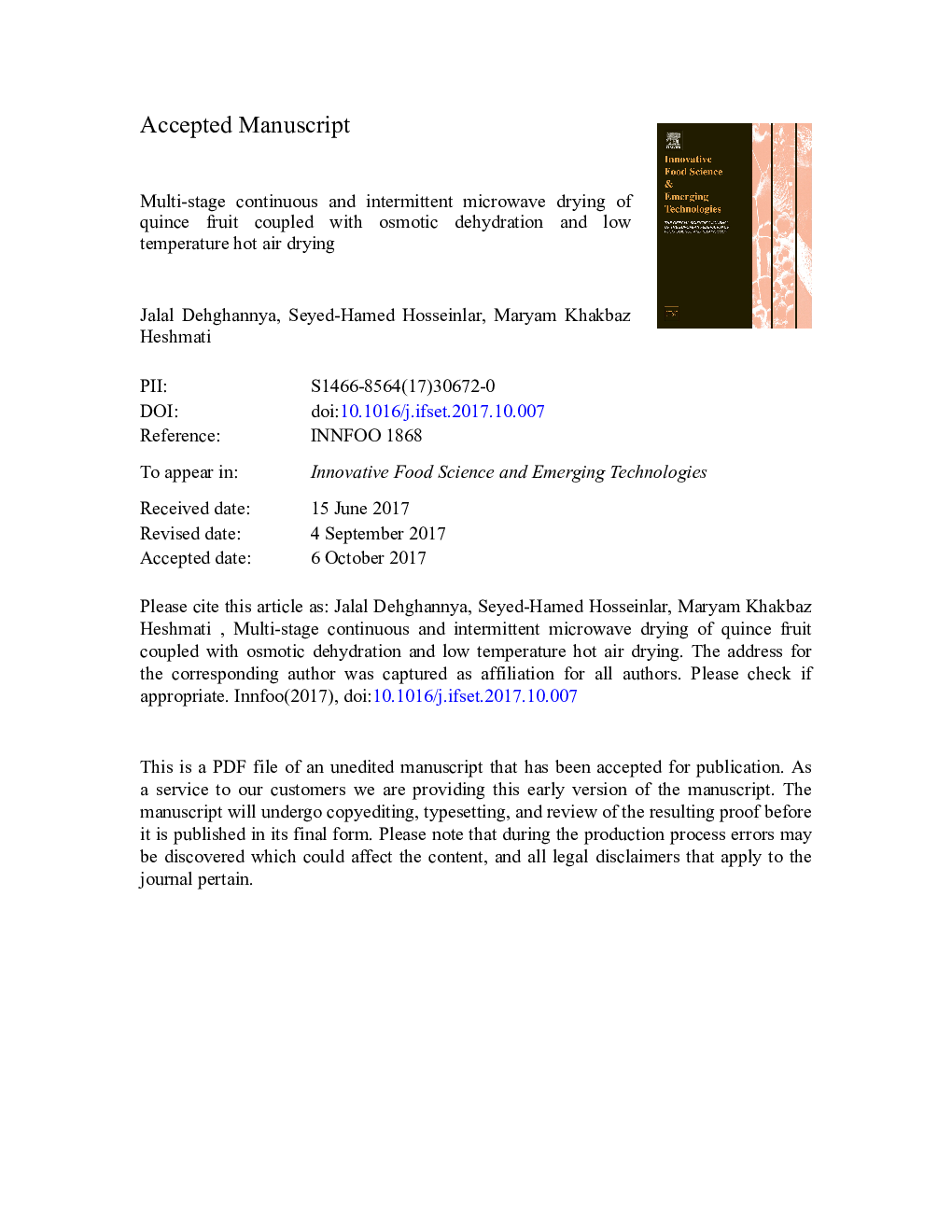| کد مقاله | کد نشریه | سال انتشار | مقاله انگلیسی | نسخه تمام متن |
|---|---|---|---|---|
| 8415566 | 1545523 | 2018 | 59 صفحه PDF | دانلود رایگان |
عنوان انگلیسی مقاله ISI
Multi-stage continuous and intermittent microwave drying of quince fruit coupled with osmotic dehydration and low temperature hot air drying
ترجمه فارسی عنوان
خشک کردن مایکروویو مداوم و متقاطع چند مرحله ای از میوه های نعناع همراه با خشک شدن اسمز معکوس و خشک شدن هوا با دمای پایین
دانلود مقاله + سفارش ترجمه
دانلود مقاله ISI انگلیسی
رایگان برای ایرانیان
کلمات کلیدی
مایکروویو مداوم و متناوب زمان خشک شدن، مصرف انرژی، میوه به، آبرسانی، انقباض،
موضوعات مرتبط
علوم زیستی و بیوفناوری
علوم کشاورزی و بیولوژیک
دانش تغذیه
چکیده انگلیسی
In recent years, using intermittent microwave (IM) to dry foodstuffs has been taken into consideration as one of the new drying methods in food industry. The aim of this research was to dry cubic pieces of pre-treated “quince” fruit by sucrose osmotic solution using IM - hot air (HA) drying at a low temperature (40 °C) in order to investigate the effects of this process on improving the dried product quality. The variables of the process included sucrose osmotic solution in 5 concentration levels of 0 (control), 10, 30, 50, and 70% (w/w) and microwave at 4 powers of 0 (control), 360, 600, and 900 W, with 4 pulse ratios of 1, 2, 3, and 4. Findings indicated that compared to control samples, the samples pre-treated by osmotic solution had lower effective moisture diffusion coefficient (Deff). However, Deff increased through increase in power and pulse ratio of the microwave. Increasing the concentration of the osmotic solution, power, and pulse ratio led to significant decreases in shrinkage. Due to high shrinkage, the quince samples dried by continuous microwave - HA method showed higher bulk density in comparison to the samples dried by IM - HA. In addition, samples dried by IM with low power showed the highest rehydration followed by those dried by IM with high power; however, the control samples dried merely by HA had the lowest rehydration. Moreover, a significant decrease in specific energy consumption was noticed through increasing the microwave power. Drying by IM - HA at the power of 900 W and the pulse ratio of 4 had the lowest specific energy consumption, while drying with only HA had the highest specific energy consumption.
ناشر
Database: Elsevier - ScienceDirect (ساینس دایرکت)
Journal: Innovative Food Science & Emerging Technologies - Volume 45, February 2018, Pages 132-151
Journal: Innovative Food Science & Emerging Technologies - Volume 45, February 2018, Pages 132-151
نویسندگان
Jalal Dehghannya, Seyed-Hamed Hosseinlar, Maryam Khakbaz Heshmati,
